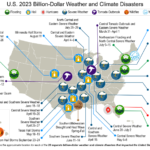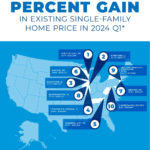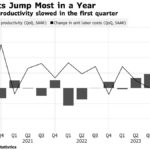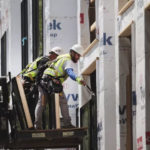As the threat of natural disasters increases—from hurricanes in the Gulf to wildfires in California—the real estate industry has learned that many homeowners in hazardous areas don’t have insurance policies that will fully cover the cost to rebuild. Such financial burdens add to affected homeowners' anxiety, while also forcing insurance carriers to re-evaluate the accuracy of their coverage.
Homeowners who are underinsured may be more likely to walk away from their mortgages and abandon their properties. CoreLogic Chief Economist Frank Nothaft says that was a prominent trend in the aftermath of natural disasters in 2018. Affected areas have seen a spike in delinquency rates, while other parts of the country are seeing a decline, he notes.
But many homeowners may mistakenly believe that their insurance payouts should equal the market value of their homes. “Many homeowners assume the cost to rebuild a property should be equal to what they paid for the property,” CoreLogic notes. “However, insurers determine reconstruction cost values (RCVs) using sophisticated residential estimating tools that deliver RCVs at today's prices. Reconstruction cost value is the cost to replace or rebuild a home to original or like standards at current material and labor costs within a certain geographical area. Meanwhile, a home’s market value is the price a consumer is willing to pay for the home.”
Reconstruction cost values average nearly 12 percent more than new construction costs, according to research from CoreLogic. To be properly covered, a home should be insured for the amount it would cost to rebuild at current prices for building materials and labor costs, CoreLogic notes. Read a Q&A on common questions homeowners have about insurance coverage at CoreLogic’s Insights blog.
Source: “Explaining to Homeowners Reconstruction Costs Versus Other Valuations,” CoreLogic Insights Blog (Feb. 6, 2019)












